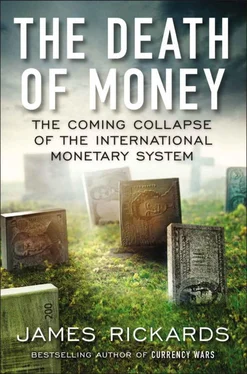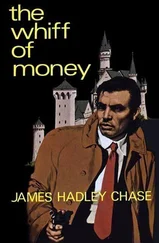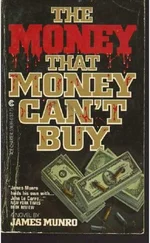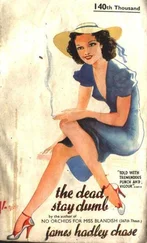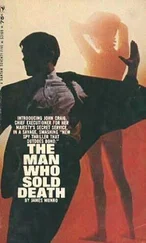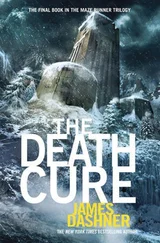James Rickards
THE DEATH OF MONEY
THE COMING COLLAPSE OF THE INTERNATIONAL MONETARY SYSTEM
For Glen, Wayne, Keith, Diane, and Eric—all best friends since the days we were born
Write down, therefore, what you have seen, and what is happening, and what will happen afterwards.
Revelation 1:19
The Death of Money is about the demise of the dollar. By extension, it is also about the potential collapse of the international monetary system because, if confidence in the dollar is lost, no other currency stands ready to take its place as the world’s reserve currency. The dollar is the linchpin. If it fails, the entire system fails with it, since the dollar and the system are one and the same. As fearsome a prospect as this dual collapse may be, it looks increasingly inevitable for all the reasons one will find in the pages to come.
A journey to the past is in order first.
Few Americans in our time recall that the dollar nearly ceased to function as the world’s reserve currency in 1978. That year the Federal Reserve dollar index declined to a distressingly low level, and the U.S. Treasury was forced to issue government bonds denominated in Swiss francs. Foreign creditors no longer trusted the U.S. dollar as a store of value. The dollar was losing purchasing power, dropping by half from 1977 to 1981; U.S. inflation was over 50 percent during those five years. Starting in 1979, the International Monetary Fund (IMF) had little choice but to mobilize its resources to issue world money (special drawing rights, or SDRs). It flooded the market with 12.1 billion SDRs to provide liquidity as global confidence in the dollar declined.
We would do well to recall those dark days. The price of gold rose 500 percent from 1977 to 1980. What began as a managed dollar devaluation in 1971, with President Richard Nixon’s abandonment of gold convertibility, became a full-scale rout by the decade’s end. The dollar debacle even seeped into popular culture. The 1981 film Rollover, starring Jane Fonda, involved a secret plan by oil-producing nations to dump dollars and buy gold; it ended with a banking collapse, a financial panic, and global riots. That was fiction but indeed was powerful, perhaps prescient.
While the dollar panic reached a crescendo in the late 1970s, lost confidence was felt as early as August 1971, immediately after President Nixon’s abandonment of the gold-backed dollar. Author Janet Tavakoli describes what it was like to be an American abroad the day the dollar’s death throes became glaringly apparent:
Suddenly Americans traveling abroad found that restaurants, hotels, and merchants did not want to take the floating rate risk of their dollars. On Ferragosto [mid-August holiday], banks in Rome were closed, and Americans caught short of cash were in a bind.
The manager of the hotel asked departing guests: “Do you have gold? Because look what your American President has done.” He was serious about gold; he would accept it as payment….
I immediately asked to pre-pay my hotel bill in lire…. The manager clapped his hands in delight. He and the rest of the staff treated me as if I were royalty. I wasn’t like those other Americans with their stupid dollars. For the rest of my stay, no merchant or restaurant wanted my business until I demonstrated I could pay in lire.
The subsequent efforts of Fed chairman Paul Volcker and the newly elected Ronald Reagan would save the dollar. Volcker raised interest rates to 19 percent in 1981 to snuff out inflation and make the dollar an attractive choice for foreign capital. Beginning in 1981, Reagan cut taxes and regulation, which restored business confidence and made the United States a magnet for foreign investment. By March 1985, the dollar index had rallied 50 percent from its October 1978 low, and gold prices had dropped 60 percent from their 1980 high. The U.S. inflation rate fell from 13.5 percent in 1980 to 1.9 percent in 1986. The good news was such that Hollywood released no Rollover 2 . By the mid-1980s, the fire was out, and the age of King Dollar had begun. The dollar had not disappeared as the world’s reserve currency after 1978, but it was a near run thing.
Now the world is back to the future.
A similar constellation of symptoms to those of 1978 can be seen in the world economy today. In July 2011 the Federal Reserve dollar index hit an all-time low, over 4 percent below the October 1978 panic level. In August 2009 the IMF once again acted as a monetary first responder and rode to the rescue with a new issuance of SDRs, equivalent to $310 billion, increasing the SDRs in circulation by 850 percent. In early September gold prices reached an all-time high, near $1,900 per ounce, up more than 200 percent from the average price in 2006, just before the new depression began. Twenty-first-century popular culture enjoyed its own version of Rollover, a televised tale of financial collapse called Too Big to Fail .
The parallels between 1978 and recent events are eerie but imperfect. There was an element ravaging the world then that is not apparent today. It is the dog that didn’t bark: inflation. But the fact that we aren’t hearing the dog doesn’t mean it poses no danger. Widely followed U.S. dollar inflation measures such as the consumer price index have barely budged since 2008; indeed, mild deflation has emerged in certain months. Inflation has appeared in China, where the government revalued the currency to dampen it, and in Brazil, where price hikes in basic services such as bus fares triggered riots. Food price inflation was also a contributing factor to protests in the Arab Spring’s early stages. Still, U.S. dollar inflation has remained subdued.
Looking more closely, we see a veritable cottage industry that computes U.S. price indexes using pre-1990 methodologies, and alternative baskets of goods and services that are said to be more representative of the inflation actually facing Americans. They offer warning signs, as the alternative methods identify U.S. inflation at more like 9 percent annually, instead of the 2 percent readings of official government measures. Anyone shopping for milk, bread, or gasoline would certainly agree with the higher figure. As telling as these shadow statistics may be, they have little impact on international currency markets or Federal Reserve policy. To understand the threats to the dollar, and potential policy responses by the Federal Reserve, it is necessary to see the dollar through the Fed’s eyes. From that perspective, inflation is not a threat; indeed, higher inflation is both the Fed’s answer to the debt crisis and a policy objective.
This pro-inflation policy is an invitation to disaster, even as baffled Fed critics scratch their heads at the apparent absence of inflation in the face of unprecedented money printing by the Federal Reserve and other major central banks. Many ponder how it is that the Fed has increased the base money supply 400 percent since 2008 with practically no inflation. But two explanations are very much at hand—and they foretell the potential for collapse. The first is that the U.S. economy is structurally damaged, so the easy money cannot be put to good use. The second is that the inflation is coming. Both explanations are true—the economy is broken, and inflation is on its way.
The Death of Money examines these events in a distinctive way. The chapters that follow look critically at standard economic tools such as equilibrium models, so-called value-at-risk metrics, and supposed correlations. You will see that the general equilibrium models in widespread use are meaningless in a state of perturbed equilibrium or dual equilibria. The world economy is not yet in the “new normal.” Instead, the world is on a journey from old to new with no compass or chart. Turbulence is now the norm.
Читать дальше
